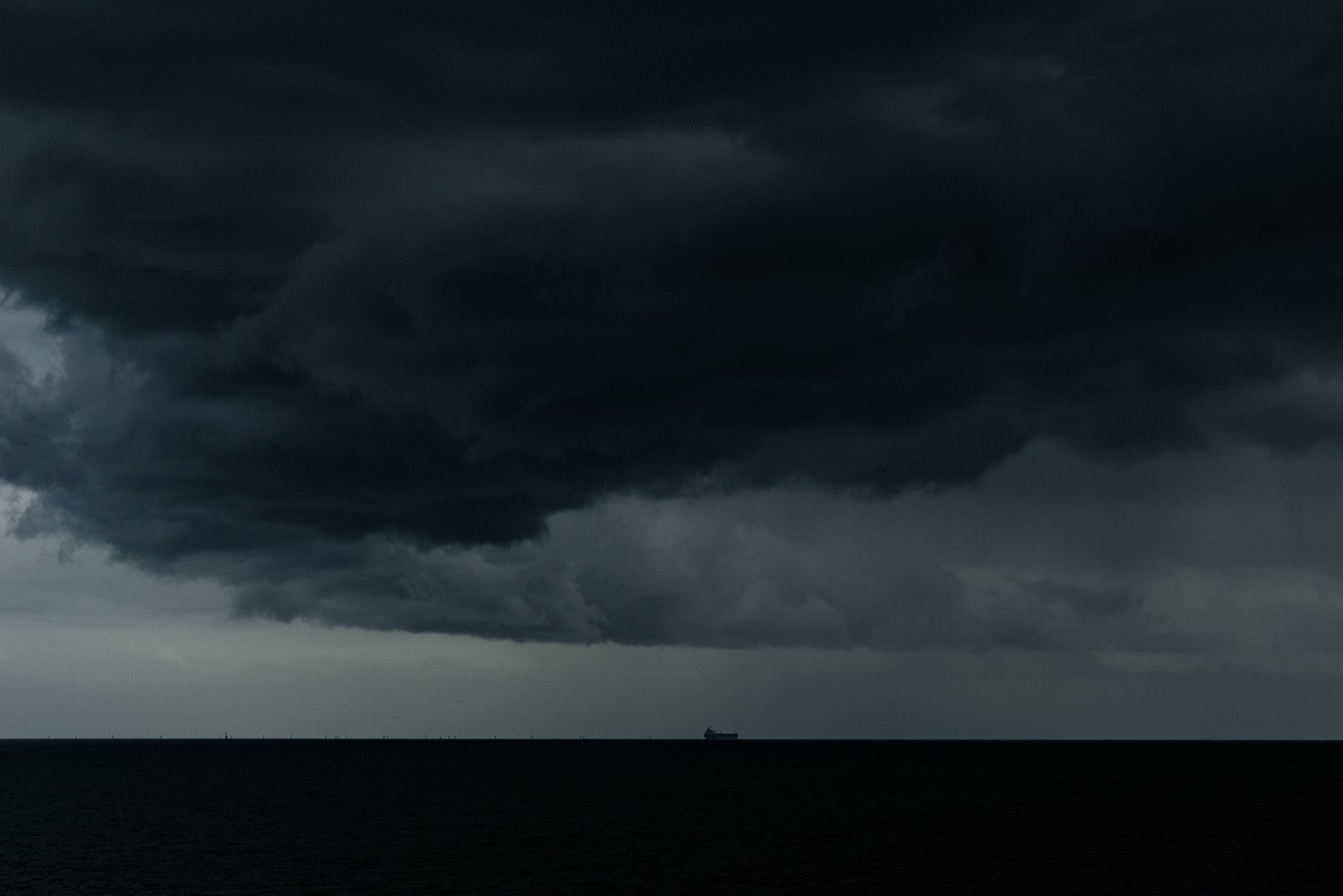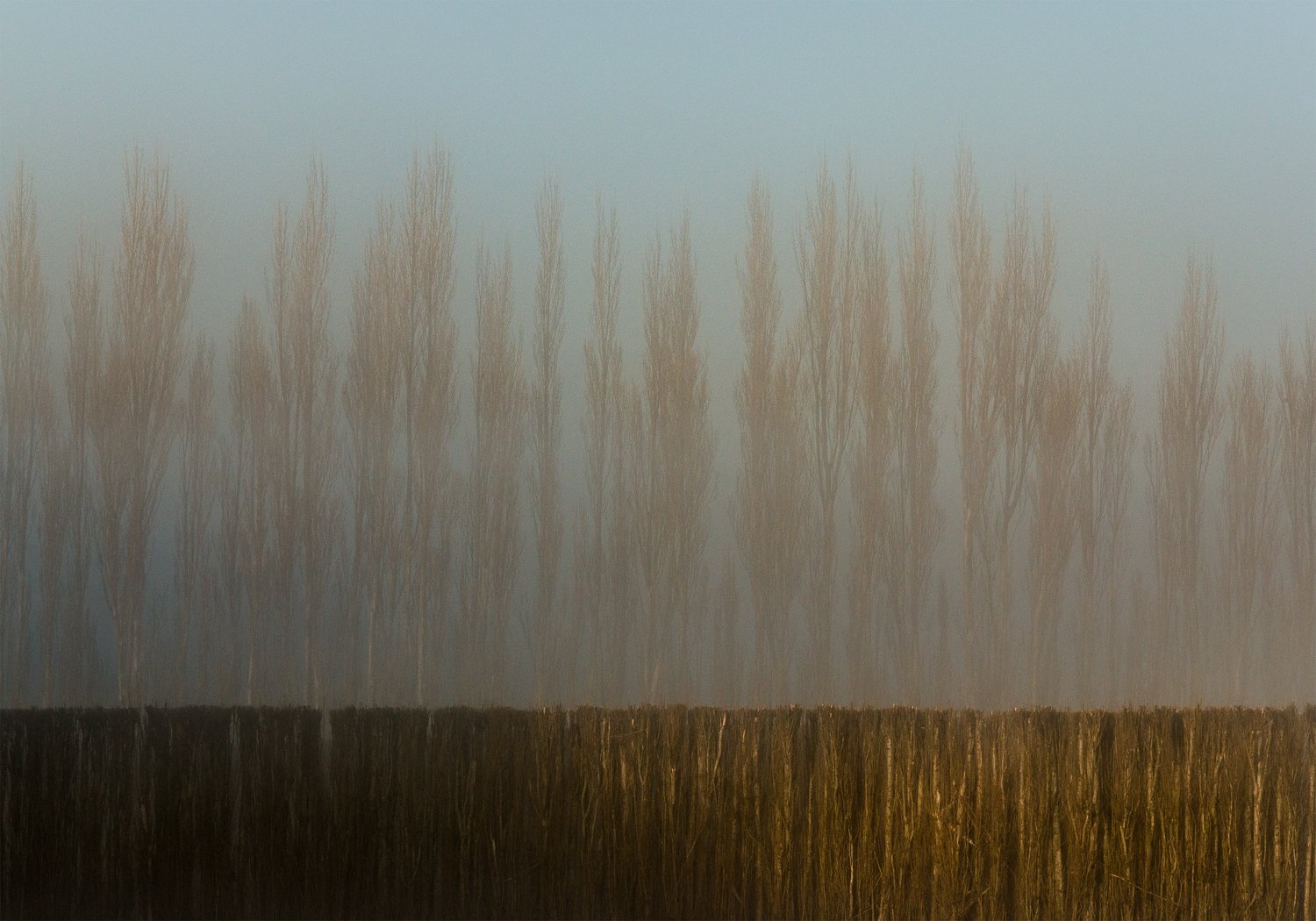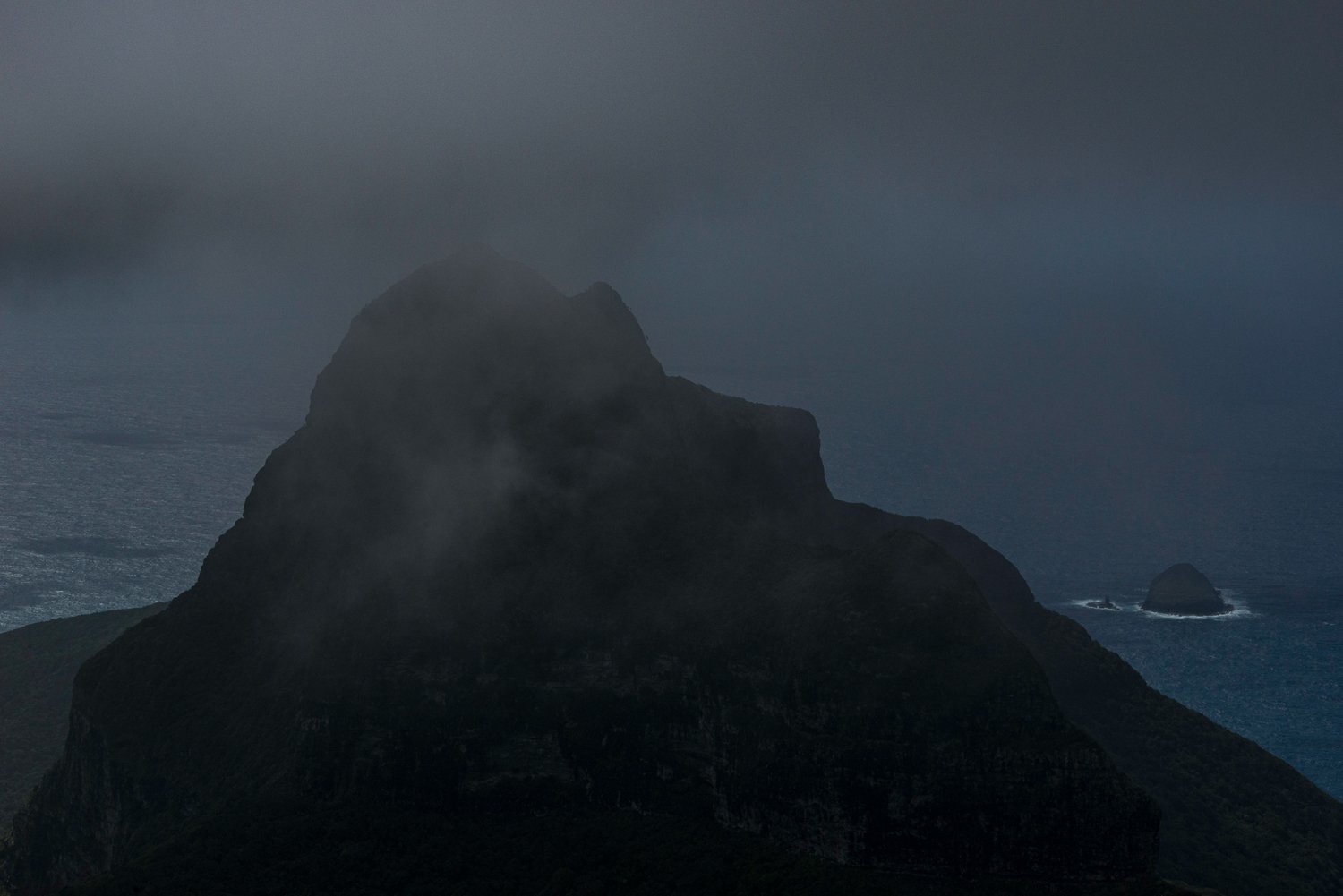PSC's Masters student Andrew Gash is a commercial photographer who worked with some of the world's top multinational advertising agencies, and more recently a fine art photographer who specialises in landscape photography. He is also a tertiary-level photography teacher, and a professional practitioner of Zen-based Awareness work. For his research project, he fuses Eastern spirituality with modern image making of our natural surroundings. The result is a series of images that depict nature in its purest form that are captured in an enhanced creative state – providing a deeper connection to the work, for both the photographer and viewer.
Read about the concepts behind his work culminating in an upcoming exhibition opening and book launch 'Indistinctive/Distinctive' at SUNSTUDIOS, why as a photography professional and educator he decided to do his Master of Arts - Photography, and the story behind him being a returning student to PSC after a 40-year hiatus.

Image by Andrew Gash
Tell us about your Master of Arts - Photography project, 'Leela (the Playfulness of the Cosmos) A Photographic Enquiry'?
Inspired by nature, the playful cosmos, this project examines the proposal that the making of photographic landscape imagery can through the influence of a Zen based practice of Awareness or Flow, become more contemplative, meditative and imaginative. And that in this practice is a method of opening one’s creativity inwards to a more intuitive, experiential and non linear type of process, enabling fresh, unconditioned ways of seeing, perceiving and being (in nature).
How does this practice ultimately affect the type of photographs you take?
Through this practice of meditative inner connection, reflection and creative flow, the power to create photographs that have the power to touch and connect more deeply with the viewer comes into play.

Image by Andrew Gash
How is this spiritual and philosophical approach beneficial to the photographer?
In my MA project written paper, I discuss at length how contemplation and imagination are essential in the mystery of creation, as well as solitude and silence and that these are essential steps in our recovering our lost sense of unity with nature and with ourselves, which leads to a richer more authentic creativity and a deeper fuller life. Drawing Closure to Nature: Making Art in Dialogue with the Natural World by Peter London, and The Zen of Creativity: Cultivating Your Artistic Life” by John Daido Loori, are the two key references I cite.
Can you explain, in layman's terms, the concept of Zen Creativity?
Loori, much as London does, introduces various teaching to deepen one’s relationship with nature and one’s art process and develop fresh and new ways of seeing and ‘being’ and experiencing. He points us to the simple truth that drawing closer to nature is not so much an outward journey to some distant exotica, but a journey in the exact opposite direction, inward to an awakening of what is already contained within. This is the great truth of all spiritual teaching and is the truth that informs the practice of "The Zen of Creativity”.
In Zen, in the action of no-action, or letting go of intention, (wu-wei) a cardinal aspect of the true creative process is set forth, the mind is silenced, and the work is allowed to express itself through, a continuous stream of spontaneity that emerges from the rhythm of circumstances.
When we stop categorising our perceptions in a rational frame of reference we open ourselves to direct experience, then the separation between the perceiver (photographer) and what is perceived (the subject/object being photographed) dissolves and disappears.

Image by Andrew Gash
How does this Eastern practice differ from Western teaching?
In the West, we learn mostly through explanations, specific instructions and referencing. These concepts come from others, which are ‘learned' by 'doing'. In Zen and its arts, space is created for the process of discovery to take place through the ‘unlearned’ by 'being'.
The process of discovery and ‘being’ is the endless spring of creativity, always bright, fresh, and spontaneous. What matters is that it is already present in each one of us, waiting to be uncovered.
Tell us about your book 'Indistinct/Distinct', which will be launched at your upcoming exhibition at SUNSTUDIOS?
This book of 98 photographs is a collection of landscape photographs I took during my Masters Program. It is divided into two halves. One half of the book contains seascapes photographed from a fixed place of observation, 17.5 meters high, near where I live, of Port Phillip Bay. The other half is of landscapes of mountains, dunes and valleys that I have observed whilst travelling across France, Switzerland and Italy.
The exhibition, also titled ‘Indistinct/Distinct’ is a collection of 15 photographs, that are a representation of the book's images.

Image by Andrew Gash
How did you come up with the book and exhibition title ‘Indistinct/Distinct’?
This came about when a visiting English Professor of Photography, who liked my images, suggested I enquire into the ‘Sublime’ in English Landscape painting. Whilst researching this ‘movement’ I came across a story about the English landscape painter Joseph Mallord William Turner, who traveled extensively in the search of the sublime and beautiful.
As Turner aged his paintings became more abstract. To his contemporaries the pictures were ‘indistinct’. When told an American collector had complained about this, Turner replied “You should tell him that indistinctiveness is my forte.”
The photographs in this book are about the interplay of the indistinct and the distinct while observing and contemplating nature. The merging of land/sky, sea/sky, sea/land. And the mysterious enigma that is the horizon line all feature in the Dance of the Cosmos!

Image by Andrew Gash
Why did you decide to do a Master of Arts - Photography?
It was an accident, my deciding to do an MA in Photography. I was not aware that it was available in Australia. In 2018, I attended the Photography Book Fair at The National Gallery of Victoria and came across the PSC Information stall, where I was amazed to see that they were offering for the first time in Australia a MA in Photography.
You are in fact and interestingly, a returning student to PSC after a four-decade hiatus, tell us about that?
Funnily enough, I had begun my photography career at PSC, back in 1978 so I have come full circle. I was studying Advertising at RMIT, and my mother won a camera in a raffle. I signed up to study photography part time at PSC, and was fortunate enough to be taught by Roger Hain, PSC’s legendary founder, for a year. One of the highlights was a photography camp up at Chewton where I took some beautiful black and white landscapes in the early morning and late afternoon light, mentored by Roger. These series of photographs were part of my folio that helped me be accepted into the degree course in Illustrative Photography at RMIT, in 1980, a course that was notoriously difficult to get into. So began my career in photography.

Image by Andrew Gash
Why did you decide to return to PSC to get your Masters?
As an established photographer with over thirty years experience, and a photographic educator I wanted to take my practice to the next level and develop a fine art body of photographic work.. I chose the PSC Master of Arts - Photography program because not only was it the first of it’s kind offered in Australia, but it is easily the best researched and organised program of its type in Australia and compares very favourably with the best dozen programs offered internationally.
In (MA Convenor) Dr. Kristian Häggblom and (Higher Education Course Director) Daniel Boetker-Smith, I found two of the most experienced and inspiring teachers and mentors I could have asked for, and the rest of the team and facilities at PSC are world class. I am indebted to them both for the vast amount of their photography knowledge and resources they shared with me and for their wise, informative and patient counsel during my Masters in Art - Photography at Photography Studies College over the last eighteen months.
What are some of the highlights during your MA journey with us?
I also found the visiting lecturers, professors, photographers, curators, book publishers and other various experts the Masters Program organised to speak to us on an almost weekly basis, thoroughly entertaining and educational. The regular visits to various exhibitions and events and gallery’s were also very well managed and assisted my photographic education immensely.

Image by Andrew Gash
Would you recommend PSC's Master of Arts - Photography program?
PSC is a less formal and more user friendly institution than other universities I have been involved with. I have found it to be a very inspiring, stimulating, inclusive, supportive and friendly place that has really helped me to take my photography to another level. PSC’s emphasis on developing one’s individual photography practice perfectly suited my desire to creatively explore my ‘own’ unique style of photography. I would highly recommend it to anyone who is serious about furthering their photographic education.
Please join Andrew for the opening of his exhibition and book launch 'Indistinct/Distinct' on Thursday 16 January from 6-9pm at SUNSTUDIOS, 95 Buckhurst Street, South Melbourne.

